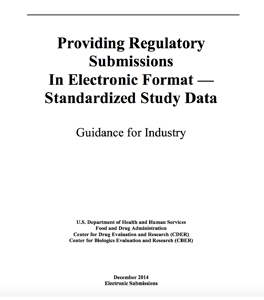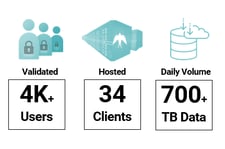Two years ago, the FDA published final guidance requiring the submission of standardized study data. The guidance stated that industry would have two years to comply. At the time, and repeatedly during the two-year transition period, the agency stated waivers would rarely be granted and compelled industry to engage in meaningful dialogue with FDA Reviewers. Given the decidedly long gestation of the guidance, a healthy  dose of skepticism seemed warranted. However, as the deadline arrives tomorrow, (December 17), our clients are telling d-Wise that their waiver requests have been denied. Organizations in the life sciences space should make no mistake – the FDA is not wavering…it will enforce the guidance.
dose of skepticism seemed warranted. However, as the deadline arrives tomorrow, (December 17), our clients are telling d-Wise that their waiver requests have been denied. Organizations in the life sciences space should make no mistake – the FDA is not wavering…it will enforce the guidance.
As the industry implements the guidance, we need to be mindful that (a) the guidance itself does not require the use of CDISC standards and (b) the guidance only applies to studies that started on or after December 17. The guidance references secondary documents, (i.e. Data Standards Catalog, Technical Conformance Guide, etc.), that specify standards supported by the FDA and non-binding recommendations for the industry. The FDA did this deliberately so that in the future, if or when a new, more robust standard emerges, it will not need to update the guidance accordingly – which can be an extremely burdensome and drawn-out process. As of December 17, the date the guidance becomes binding, the submission data standards supported by the FDA are the CDISC data standards.
Additionally, the guidance does not require that submissions on or after December 17 be in a CDISC format. The guidance actually states that studies beginning on or after December 17 that are included  in a submission must be in a CDISC format. d-Wise expects many sponsors are rushing to initiate studies prior to the deadline.
in a submission must be in a CDISC format. d-Wise expects many sponsors are rushing to initiate studies prior to the deadline.
Organizations must be aware that the FDA is quietly releasing updates to its secondary documents, as well as issuing new supporting documentation – documentation that impacts studies that started prior to December 17. The latest version of the Study Data Technical Conformance Guide, (v3.2, October 31, 2016), provides additional clarity on a variety of topics including some that have been a source of confusion for many of our customers. For example, the update clarifies the agency’s expectations regarding the length of character variables on submission datasets, software programs provided as part of a submission, and the use of CDISC Therapeutic Area User Guides.
On October 3, 2016, the FDA released a new supporting document, Technical Rejection Criteria for Study Data and issued a subsequent revision on November 14, 2016. The document provides a set of criteria to  which all submissions must adhere. “If the submission fails these criteria, it will be rejected and the sponsor will be notified.” (p1). This statement could not be clearer. However, the clarity ends with the first criteria, which requires that the SDTM Trial Summary (TS) domain must be provided for all clinical and non-clinical studies included in a submission “even if the study started prior to December 17, 2016” (p2). As such, organizations may have some unanticipated work to do on older studies.
which all submissions must adhere. “If the submission fails these criteria, it will be rejected and the sponsor will be notified.” (p1). This statement could not be clearer. However, the clarity ends with the first criteria, which requires that the SDTM Trial Summary (TS) domain must be provided for all clinical and non-clinical studies included in a submission “even if the study started prior to December 17, 2016” (p2). As such, organizations may have some unanticipated work to do on older studies.
The FDA is committed to the receipt of standardized study data. Life Science organizations must recognize this commitment and navigate the web of guidance and supporting documents to ensure their submissions meet the agency’s requirements. Failure to do so will result in submission delays, loss of revenue, and most importantly, un-met patient needs.
Learn how d-wise can help your company improve your product submission processes with any example of how we assisted ADaM development methodology, lessons learned during an ADaM implementation, and how to develop an overall (and ongoing) standards governance process.
